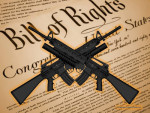Update on federal firearms restoration program
Last spring, the Department of Justice (DOJ) announced its intention to revive a long-dormant program to remove federal restrictions on firearm possession, including for those with a criminal record. In July DOJ published for comment a proposed rule that would, when finalized, accomplish this for people who are determined to pose no public safety risk. See 18 U.S.C. § 925(c). See Trump’s Justice Department aims to restore gun rights for nonviolent offenders.
The comment period closed on October 20, and it is therefore possible that a final rule will be published at any time to launch the revived program. This will open the door, for the first time in more than 30 years, to many individuals who have been unable to regain their firearm rights because of their criminal record. It is anticipated that thousands of people will want to apply for this relief, which will be administered by the Justice Department’s Office of the Pardon Attorney.
We have some concerns about whether the demanding § 925(c) application process described in the proposed rule will deliver on its promise. For example, the document production requirements may be challenging for many people, especially those with dated minor convictions. See proposed 28 CFR § 107.1(d). Hopefully, the final rule will facilitate application rather than discourage it for those unable to hire counsel. At a minimum, the revived § 925(c) process will provide an alternative to presidential pardon for people dispossessed because of a federal conviction.
But relief under § 925(c) affects only restrictions on firearm possession arising under federal law, and will not affect analogous restrictions in the laws of most states. As a result, individuals who benefit from the federal restoration program will need to determine what their rights are under state law. In all likelihood, states will also want to determine whether restrictions in their own laws should conform to or outlive federal ones.
While the new federal restoration program may be good news for people who can successfully navigate it, the not-so-good news is that many of these same people (including those with federal convictions) will remain frustrated by restrictive state laws that permanently prohibit their possession of any firearm without regard to public safety risk.
In June of 2025, CCRC published a report on state law firearm restrictions that will inform these determinations. CCRC’s report, Restoration of Firearm Rights After Conviction: A National Survey and Suggestions for Reform, offers a comprehensive picture of the differing ways states restrict and restore the right to possess a firearm for those dispossessed because of a criminal record, including relevant sections of statutory text to facilitate analysis and comparison. CCRC’s report concluded that most states restrict firearm rights too broadly and make restoration difficult, in potential violation of the Second Amendment.
Our report found that only 13 states limit dispossession to violent crimes, and 34 states offer no route to firearm relief to residents convicted in another state or in federal court. Sixteen (16) states make pardon the exclusive way to regain state firearm rights, and not all of those states offer pardon as a reliable remedy. Even in those states where pardoning is frequent and regular, those with out of state or federal convictions may be out of luck (unless the state gives effect to pardons issued by other jurisdictions).
Our research revealed that only 16 states provide a way to regain lost rights that is easily accessible to all state residents wherever they were convicted, usually from an administrative agency or a court in the county of their residence. That is the kind of relief system we recommend.
We are in the process of updating our report on state firearms dispossession laws to reflect new enactments in a dozen states since June, and we expect to republish it before Thanksgiving.
NOTE: One interesting additional development since June is that the Supreme Court has agreed to hear a case that could add to our understanding of how the Second Amendment applies to federal firearm restrictions. The case, United States v. Hemani, involves the federal prosecution of a Texas man for violating the prohibition on gun possession by anyone who is “an unlawful user of” any controlled substance. 18 U.S.C. § 922(g)(3). The district court found § 922(g)(3) unconstitutional as applied to Mr. Hemani, and the court of appeals agreed.
The Justice Department has urged the Supreme Court to find § 922(g)(3) constitutional as analogous to Founding Era gun laws applicable to “habitual drunkards,” despite the absence of any record facts to support such a finding in Mr. Hemani’s case. It has also argued that the impending revival of the § 925(c) relief program obviates any constitutional problem with this provision, which the proposed regulation explains applies only to those currently using drugs in violation of the law. The Court’s willingness to hear the case suggests an openness to curbing aggressive federal firearm prosecution policies in cases implicating the Second Amendment.





